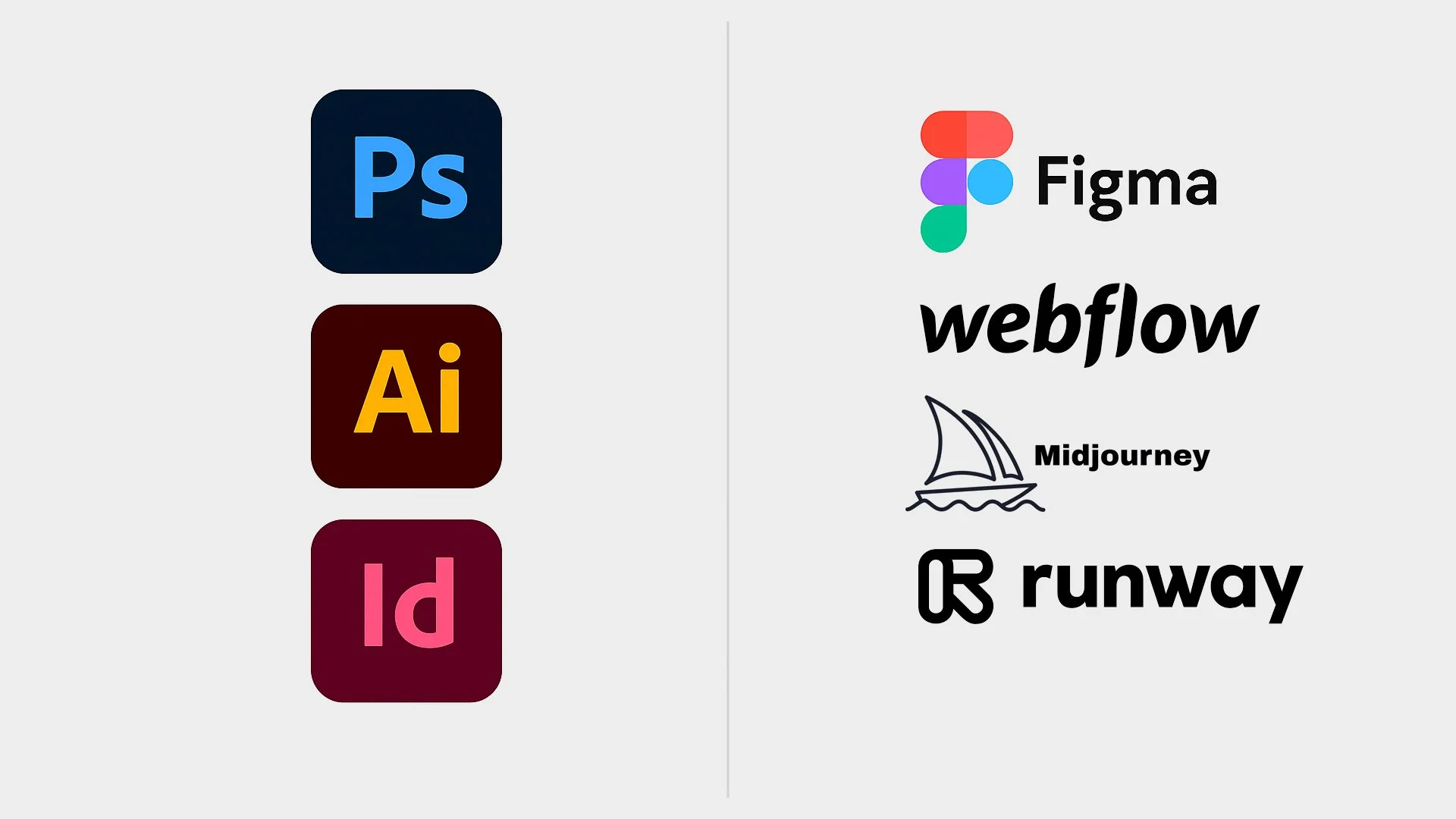The Changing Tools of Design and the Skills Students Need to Begin
For decades, Adobe’s Creative Suite was the one true gateway into design. If you wanted to be a graphic designer, multimedia designer, or art director, you were expected to know Photoshop, Illustrator, and InDesign as fluently as a musician knows their scales. These programs defined both the professional workflow and the entry-level job description. But this dominance has shifted.
Today, the toolset of a designer is no longer confined to one ecosystem. Adobe still plays a central role, but it now sits alongside platforms like Figma, Webflow, Framer, and a growing set of AI-native tools such as MidJourney, Firefly, Runway, Loveable and Replit. Each brings a different emphasis: Figma for collaboration, Webflow for no-code publishing, AI tools for speed and generation. The essential lesson is that there is no longer a single stack. Instead, designers must be fluent across many, choosing the right tool for the right problem.
This shift has also changed what entry-level work looks like. Tasks that once occupied junior designers, such as resizing images, producing endless variations, or slicing assets for developers, are increasingly automated. Generative AI can output layouts and graphics in seconds. Responsive frameworks adapt across devices without needing manual redrawing. What this means is that technical execution is no longer enough to carry a new designer into the field.
What matters now are skills that cannot be automated. Employers look for curiosity, the ability to think critically, and the confidence to direct rather than simply produce. They want designers who understand the timeless principles of balance, contrast, hierarchy, and accessibility, and who can apply them across a shifting set of platforms. They value adaptability, storytelling, and a sensitivity to user experience. A strong designer today is as comfortable guiding an AI system as they are sketching a quick wireframe, and they know how to critique outputs rather than accept them at face value.
For students preparing to enter the creative industries, this changing tide means two things. First, tool fluency is important, but it is no longer about mastery of one program. It is about moving fluidly between Photoshop and Figma, between no-code platforms and generative tools, without losing sight of design fundamentals. Second, reflection is essential. Students must understand how tools shape their process, what each affords, and where human judgment is irreplaceable.
The future of entry-level design work may feel uncertain, but it also opens space for greater creativity. If the repetitive tasks are handled by machines, the opportunity is for young designers to step in as thinkers, collaborators, and storytellers. Those who bring both adaptability and a strong foundation in design will not only find their place, but help shape the next generation of tools and practices.
